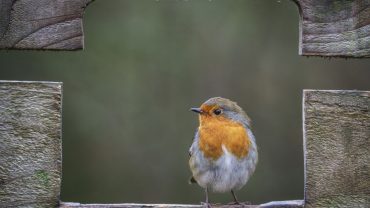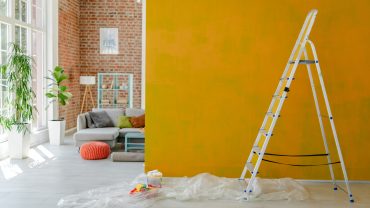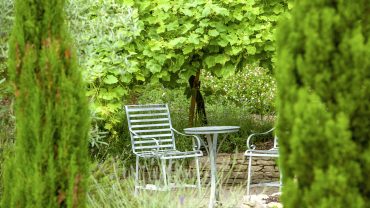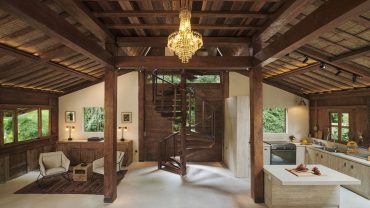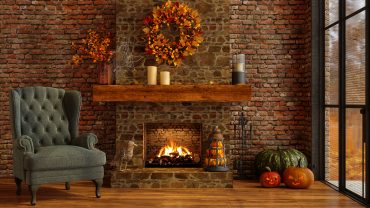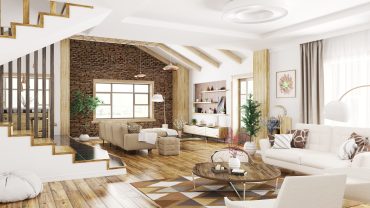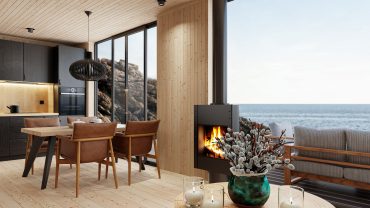At first glance, the term “cluttercore” or “clutter core” seems to suggest a fondness for untidiness. The word “clutter” is traditionally synonymous with mess, conjuring images of disorganised heaps and chaotic spaces. Meanwhile, the suffix “-core” has become a social media staple, used to define particular styles, trends, or movements. For example, “lovecore” is all about decorating with hearts, pinks, and reds, while “craftcore” signifies a devotion to all things handmade. However, according to its fans, cluttercore defies these assumptions. What might appear to be unbridled disarray is, in fact, often carefully curated.
So, precisely what is cluttercore? How did this trend emerge, and what sets it apart from other aesthetics like maximalism or minimalism? We’re sifting through the jumble of info out there to find the answers.
The Origins of Cluttercore

Is cluttercore a reaction to minimalism? (Credit: Download it via Getty Images)
In 2014, Marie Kondo burst onto the home decor scene with her bestselling book, The Life-Changing Magic of Tidying Up. By 2019, she was a household name, espousing her KonMari Method of decluttering and keeping only items that “spark joy.” Some view cluttercore as a reaction to the minimalist ideals of simplicity and order. To others, it was a result of the pandemic changing people’s attitudes to their homes. And cluttercore certainly gained momentum in 2020, particularly on platforms like TikTok. So, what did it mean?
The term combines “clutter” with “-core,” a suffix used to define various social media-driven aesthetics. As for “clutter,” it does not allude to a state of untidiness or the abundant accumulation of things. Rather, cluttercore celebrates the emotional significance of objects; curating meaningful belongings that reflect personal journeys. Let’s explore this in more detail.
Defining Characteristics of Cluttercore Aesthetic

Books, books, and more books (Credit: Mint Images via Getty Images)
At the heart of the cluttercore aesthetic is the idea that a space should reflect the individuality and life experiences of its inhabitant. It’s about more than just filling a room with objects; it’s about curating a collection of items that tell a story. Some of the defining features of cluttercore design include:
Curated Sentimental Objects
One of the most distinctive aspects of cluttercore decor is the inclusion of sentimental objects. These could be anything from heirlooms passed down through generations to trinkets picked up during travels. Each item has its own narrative, contributing to the overall tapestry of the space. This personal touch differentiates cluttercore from other design styles, making each room a reflection of its owner’s journey and memories.
Layered Textures & Patterns
In cluttercore design, textures and patterns play a crucial role in creating visual interest. Unlike minimalist interiors that often rely on uniform surfaces and materials, cluttercore embraces the juxtaposition of different fabrics, colours, and designs. Velvet cushions might sit alongside woollen throws, while floral patterns mix with geometric designs. This layering effect adds depth and warmth to the space, making it feel cosy and welcoming.
Abundance of Books & Collections
Books, collections, and curiosities are a staple in cluttercore interiors. Whether it’s a towering bookshelf filled to the brim or a display of antique cameras, these collections are integral to the cluttercore aesthetic. They not only serve as decor but also as conversation starters, inviting guests to explore and ask questions. The abundance of such items also contributes to the lived-in feel that is central to cluttercore.
Eclectic Furniture & Decor
Furniture in cluttercore design is as eclectic as the objects that fill the space. There’s no need for a matching set; instead, different pieces are chosen based on their sentimental value, comfort, or aesthetic appeal. An antique armchair might sit beside a modern coffee table, and this mix-and-match approach adds to the charm of the cluttercore aesthetic. The key is that each piece feels intentional, adding to the room’s narrative rather than detracting from it.
Artful Displays of Clutter
One might think that cluttercore is simply about filling a space haphazardly, but there’s usually an art to arranging items in a way that feels both full and curated. Shelves, walls, and even floors become canvases for displaying objects in a way that feels organic yet intentional. The result is a space that feels dynamic and ever-evolving, with each item contributing to the overall harmony of the room.
Cluttercore vs. Maximalism

Cluttercore style eclectic, mismatched furniture (Credit: Catherine Ledner via Getty Images)
Cluttercore is often treated as synonymous with maximalism. Indeed, both embrace abundance, rejecting minimalist simplicity, but they differ in execution and intent.
Maximalism is characterised by a structured, visually cohesive approach that uses bold colours, patterns, and eclectic furnishings to create a vibrant and harmonious space. It often aims for opulence and visual order.
In contrast, cluttercore prioritises personal expression and emotional resonance over aesthetic harmony. It celebrates mismatched items, sentimental objects, and the organic layering of textures, creating spaces that feel intimate and lived-in. Originating from social media, cluttercore reflects a modern cultural shift toward embracing imperfection and individuality.
While both styles reject minimalism, cluttercore focuses more on showcasing personal stories. Let’s take a closer look at the philosophy behind it.
The Cluttercore Decor Philosophy

Comfortable, stylish and expressive living space (Credit: Boris SV via Getty Images)
While cluttercore may seem like a free-for-all in terms of design, there’s an underlying philosophy that guides this aesthetic. At its heart, cluttercore design is about creating a space that feels lived-in, comfortable, and deeply personal. It rejects the idea that a home should be a sterile showroom and instead embraces the messiness and complexity of real life.
It encourages individuals to surround themselves with objects that bring them joy, rather than worrying about what is trendy or in style. In this way, cluttercore decor becomes a form of self-expression and a declaration of individuality.
Cluttercore Design in Practice

Cool collection of classic clocks (Credit: Sharon Lapkin via Getty Images)
Bringing cluttercore into a living space isn’t necessarily about spending more and buying lots of new things. Instead, it’s about thoughtfully curating the items that you already own. It’s about recognising the value in your own possessions which may seem mundane to others but hold deep personal significance. This might mean displaying a collection of vintage teacups, arranging a gallery wall of family photos, or simply keeping a beloved, albeit threadbare, armchair in a prominent spot.
Clearing Up Cluttercore

Every box tells a story (Credit: Leo Viktorov via Getty Images)
In summary, cluttercore is all about the stories that belongings tell, creating a space that’s not only visually stimulating but also deeply personal. So, is it messy or meticulous? How about a compromise – it’s more of a meticulous mess.

